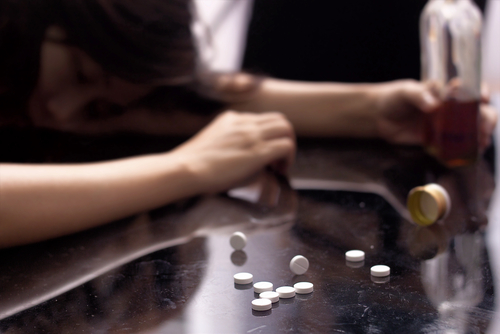Medication can help get the toxic substances out of your body during the detoxification (detox) process. You don’t necessarily need medication to detox. However, medication can significantly reduce your withdrawal symptoms and make detoxing more comfortable if you have a severe dependency on substances. Medication during detox can also reduce the risk of overdosing. Receiving medication during detox will make it easier for you to manage your substance abuse symptoms and withdrawal.
What Is a Clinically Assisted Detox?
Substance dependency is caused by chemical changes in your mind and body. When you suddenly stop using a substance that your body has become dependent on, you lose functionality. This is why “going cold turkey” often doesn’t work. At the point in your addiction when you are dependent, your body needs the substance or a replacement to survive.
During a clinical detox, a licensed vocational nurse (LVN) monitors your withdrawal symptoms and administers medication to reduce symptoms. You’ll also have staff available to you 24/7. This way, if you find yourself in emotional or physical pain, someone will be available to help ease it.
What Are the Harms of Self-Detox?
Without the proper supervision, detox can be uncomfortable and dangerous. Most medications that can improve withdrawal symptoms aren’t available in a convenience store or general physician. Some substances like alcohol or benzodiazepines can have life-threatening withdrawal symptoms like seizures and severe dehydration. A detox that is guided by professionals allows you to detox in an environment that is safe for both your physical and mental health.
Medication-Assisted Treatment
During the detox process, medication can be used to ease withdrawal symptoms. The severity of addiction and substance abuse will weigh into whether or not you need medicated-assisted treatment (MAT) to be part of your detox.
According to the Substance Abuse and Mental Health Services Administration (SAMHSA), MAT is “The use of medications, in combination with counseling and behavioral therapies, to provide a “whole-patient” approach to the treatment of substance use disorders.”
In some cases, not having MAT during detox can be life-threatening, and in other cases, it could soothe withdrawal discomfort. How long you’re on MAT may also vary and should be re-evaluated periodically.
Opioid Use Disorder (OUD)
Primarily MAT is used for opioid use disorder (OUD). However, it can be used for other substance use disorders (SUDs), most notably alcohol use disorder (AUD). There are three FDA-approved drugs for OUD treatment:
- Methadone: FDA-approved in 1947, long-acting opioid agonist, reduces cravings by blocking the effects of opioids, reduces withdrawal symptoms by mitigating pain
- Buprenorphine: FDA-approved in 2002, opioid partial agonist, weaker than methadone, reduces withdrawal, reduces cravings, can be dispensed by a physician
- Naltrexone: FDA-approved in 2010, blocks the euphoric and sedative effects of opioids, reducing the risk of overdose and addiction
There are misconceptions that MAT replaces one drug with another. However, these three drugs have been tested and proven to be a safe and effective method for OUD treatment when paired with counseling and psychotherapy. At the same time, these drugs should be taken with oversight.
Withdrawal and Symptoms
OUD has dangerous withdrawal symptoms that could make it difficult to maintain sobriety without the use of medications. Some withdrawal symptoms may include:
- Nausea and vomiting
- Anxiety
- Insomnia
- Hot and cold flushes
- Perspiration
- Muscle cramps
- Water discharge from eyes or nose
- Diarrhoea
- Difficulty sleeping
The End of Detox Is Not The End of Treatment
The completion of detox is only the first step in a recovery treatment program. Detoxification mitigates withdrawal symptoms and gets the substance out of your body. However, it doesn’t give you any tools or coping mechanisms to manage your substance abuse or mental health symptoms.
Without psychotherapy, there is a high risk of relapse. Treatments like cognitive-behavioral therapy (CBT) and dialectical behavior therapy (DBT) can help you succeed in recovery. A therapist can help you understand the root cause of your addiction, identify triggers, and help you navigate your mental health symptoms. They can give you tools to enhance your physical and mental health, reach your recovery goals, and strengthen your relationships.
Emotional Detox
Staying in an inpatient program after a physical detox can give you the space to have an emotional one. This means taking the time to analyze and understand your emotions and thoughts.
You will be removed from the stressful surrounding of your everyday life, which will allow you to focus solely on your recovery without worrying about other life stressors. It’s important that you understand what led you to substance abuse in order to maintain a successful recovery. Identifying the root cause of the problem is the first step to coming up with solutions to manage it.
During inpatient treatment, you’ll also be removed from your normal social circle, allowing you to objectively assess potentially toxic relationships. It will also allow you to build relationships with your peers and grow your support network.
Medication can be necessary during detox, depending on how severe your dependency on a substance is. However, even with milder dependency, medication can ease withdrawal symptoms. Pathways Recovery Center wants you to be as comfortable as possible during the detox process. Our program can provide you with a safe space where physical and mental withdrawal symptoms can be mitigated. We offer a clinical detoxification program that provides 24/7 services and offers MAT. Our mental health professionals can give you the tools you need to conquer your substance abuse and mental health symptoms. If you or someone you know is struggling with substance abuse, call (888) 771-0966 to learn more about how we can help you during your recovery journey.




